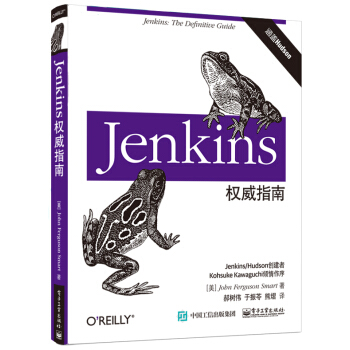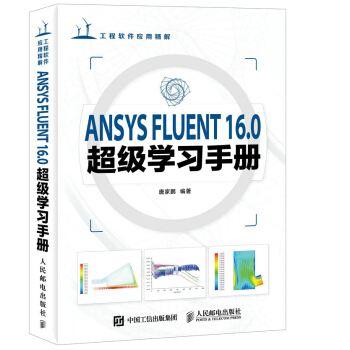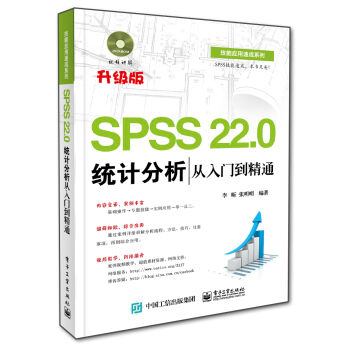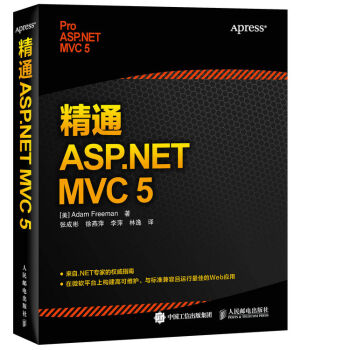![数据结构与算法分析——C语言描述(英文版·第2版) [Date Structures and Algorithm Analysis in C]](https://pic.tinynews.org/10060574/8a221d78-022a-416e-93b8-25aa90505ae7.jpg)

具体描述
内容简介
《数据结构与算法分析:C语言描述》曾被评为20世纪很好的30部计算机著作之一,作者在数据结构和算法分析方面卓有建树,他的数据结构和算法分析的著作尤其畅销,并受到广泛好评,已被世界500余所大学选作教材。在《数据结构与算法分析:C语言描述》中,作者精炼并强化了他对算法和数据结构方面创新的处理方法。通过C程序的实现,着重阐述了抽象数据类型的概念,并对算法的效率、性能和运行时间进行了分析。
《数据结构与算法分析:C语言描述》特色:着重讨论了算法设计技巧,包括贪婪算法、分治算法、动态规划、随机化算法以及回溯算法。系统介绍了当前流行的论题和新的数据结构,如斐波那契堆、斜堆、二项队列、跳跃表和伸展树。详细讨论了摊还分析,考查书中介绍的一些高级数据结构。增加了高级数据结构及其实现的内容,包括红黑树、自顶向下伸展树、treap树、k-d树、配对堆等。整合了堆排序平均情况分析的一些新结果。
作者简介
Mark Allen Weiss 1987年在普林斯顿大学获得计算机科学博士学位。师 从Roberl Sedgewick,现任美国佛罗里达国际大学计算与信息科学学院教授。他曾担任全美AP(Advanced Placement)考试计算机学科委员会主席。其主要研究方向是数据结构、算法和教育学。内页插图
目录
Introduction 11.1. Whats the Book About? 1
1.2. Mathematics Review 3
1.2.1. Exponents 3
1.2.2. Logarithms 3
1.2.3. Series 4
1.2.4. Modular Arithmetic 5
1.2.5. The P Word 6
1.3. A Brief Introduction to Recursion
Summary 12
Exercises 12
References 13
2 Algorithm Analysis 15
2.1. Mathematical Background 15
2.2. Model 18
2.3. What to Analyze 18
2.4. Running Tune Calculations 20
2.4.1. A Simple Example 21
2.4.2. General Rules 21
2.4.3. Solutions for the Maximum Subsequence Sum Problem 24
2.4.4. Logarithms in the Running Tune 28
2.4.5. Checking Your Analysis 33
2.4.6. A Grain of Salt 33
Summary 34
Exercises 35
References 39
3 Lists, Stacks, and Queues 41
3.1. Abstract Data Types (AnTs) 41
3.2. The List ADT 42
3.2.1. Simple Array Implementation of Lists 43
3.2.2. Linked Lists 43
3.2.3. Programming Details 44
3.2.4. Common Errors 49
3.2.5. Doubly Linked Lists 51
3.2.6. Circularly Unked Lists 52
3.2.7. Examples 52
3.2.8. Cursor Implementation of Linked Lists 57
3.3. The Stack ADT 62
3.3.1. Stack Model 62
3.3.2. Implementation of Stacks 63
3.3.3. Applications 71
3.4. The Queue ADT 79
3.4.1. Queue Model 79
3.4.2. Array Implementation of Queues 79
3.4.3. Applications of Queues 84
Summary 85
Exercises 85
4 Trees 89
4.1. Preliminaries 89
4.1.1. Implementation of Trees 90
4.1.2. Tree Traversals with an Application 91
4.2. Binary Trees 95
4.2.1. Implementation 96
4.2.2. Expression Trees 97
4.3. The Search Tree ADT-Binary Search Trees 100
4.3.1. MakeEmpty 101
4.3.2. Find 101
4.3.3. FindMin and FindMax 103
4.3.4. Insert 104
4.3.5. Delete 105
4.3.6. Average-Case Analysis 107
4.4. AvI Trees 110
4.4.1. Single Rotation 112
4.4.2. Double Rotation 115
4.5. Splay Trees 123
4.5.1. A Simple Idea (That Does Not Work) 124
4.5.2. Splaying 126
4.6. Tree Traversals (Revisited) 132
4.7. B-Trees 133
Summary 138
Exercises 139
References 146
5 Hashing 149
5.1. General Idea 149
5.2. Hash Function 150
5.3. Separate Chaining 152
5.4. Open Addressing 157
5.4.1. Linear Probing 157
5.4.2. Quadratic Probing 160
5.4.3. Double Hashing 164
5.5. Rehashing 165
5.6. Extendible Hashing 168
Summary 171
Exercises 172
References 175
6 Priority Queues (Heaps) 177
6.1. Model 177
6.2. Simple Implementations 178
6.3. Binary Heap 179
6.3.1. Strocture Property 179
6.3.2. Heap Order Property 180
6.3.3. Basic Heap Operations 182
6.3.4. Other Heap Operations 186
6.4. Applications of Priority Queues 189
6.4.1. The Selection Problem 189
6.4.2. Event Simulation 191
6.5. d-Heaps 192
6.6. Leftist Heaps 193
6.6.1. Leftist Heap Properly 193
6.6.2. Leftist Heap Operations 194
6.7. Skew Heaps 200
6.8. Binomial Queues 202
6.8.1. Binomial Queue Structure 202
6.8.2. Binomial Queue Operations 204
6.8.3. Implementation of Binomial Queues 205
Summary 212
Exercises 212
References 216
7 Sorting 219
7.1. Preliminaries 219
7.2. Insertion Sort 220
7.2.1. The Algorithm 220
7.2.2. Analysis of Insertion Sort 221
7.3. A Lower Bound for Simple Sorting Algorithms 221
7.4. SheUsort 222
7.4.1. Worst-Case Analysis of Shellsort 224
7.5. Heapsort 226
7.5.1. Analysis of Heapsort 228
7.6. Mergesort 230
7.6.1. Analysis of Mergesort 232
7.7. Quicksort 235
7.7.1. Picking the Pivot 236
7.7.2. Partitioning Strategy 237
7.7.3. Small Arrays 240
7.7.4. Actual Quicksort Routines 240
7.7.5. Analysis of Quicksort 241
7.7.6. A Linear-Expected-Time Algorithm for Selection 245
7.8. Sorting Large Structures 247
7.9. A General Lower Bound for Sorting 247
7.9.1. Decision Trees 247
7.10. Bucket Sort 250
7.11. External Sorting 250
7.11.1. Why We Need New Algorithms 251
7.11.2. Model for External Sorting 251
……
8 The Disjoint Set ADT
9 Graph Algorithms
10 Algorithm Design Techniques
11 Amortized Analysis
12 Advanced Data Structures and Implementation
精彩书摘
This example illustrates what we call randomized algorithms. At least onceduring the algorithm, a random number is used to make a decision. The runningtime of the algorithm depends not only on the particular input, but also on therandom numbers that occur.The worst-case running time of a randomized algorithm is almost always thesame as the worst-case running time of the nonrandomized algorithm. The importantdifference is that a good randomized algorithm has no bad inputs, but only badrandom numbers (relative to the particular input). This may seem like only aphilosophical difference, but actually it is quite important, as the following exampleshows.
Consider two variants of quicksort. Variant A uses the first element as pivot,while variant B uses a randomly chosen element as pivot. In both cases, the worst-case running time is (N2), because it is possible at each step that the largestelement is chosen as pivot. The difference between these worst cases is that there is aparticular input that can always be presented to variant A to cause the bad runningtime. Variant A will run in (N2) time every single time it is given an already-sortedlist. If variant B is presented with the same input twice, it will have two differentrunning times, depending on what random numbers occur.
前言/序言
This book describes data structures, methods of organizing large amounts of data,and algorithm analysis, the estimation of the running time of algorithms. As com-puters become faster and faster, the need for programs that can handle large amountsof input becomes more acute. Paradoxically, this requires more careful attention toefficiency, since inefficiencies in programs become most obvious when input sizes arelarge. By analyzing an algorithm before it is actually coded, students can decide if aparticular solution will be feasible. For example, in this text students look at specificproblems and see how careful implementations can reduce the time constraint forlarge amounts of data from 16 years to less than a second. Therefore, no algorithmor data structure is presented without an explanation of its running time. In somecases, minute details that affect the running time of the implementation are explored.Once a solution method is determined, a program must still be written. Ascomputers have become more powerful, the problems they must solve have becomelarger and more complex, requiring development of more intricate programs. Thegoal of this text is to teach students good programming and algorithm analysis skillssimultaneously so that they can develop such programs with the maximum amountof efficiency.
This book is suitable for either an advanced data structures (CS7) course ora first-year graduate course in algorithm analysis. Students should have some know-ledge of intermediate programming, including such topics as pointers and recursion,and some background in discrete math.
用户评价
我一直以来都对算法的“魔法”感到好奇,但总是觉得缺乏一个扎实的理论基础来支撑我的探索。这本《数据结构与算法分析——C语言描述(英文版·第2版)》恰恰填补了我的这一空白。作者在讲解各种经典算法时,不仅给出了C语言的实现,更重要的是,他花了大量的篇幅去分析这些算法的时间复杂度和空间复杂度。例如,在讨论排序算法时,从简单的冒泡排序、插入排序,到更高效的快速排序、归并排序,再到堆排序,书中都给出了详细的步骤拆解和数学推导,让我不再满足于“它能用”,而是开始理解“它为什么这么高效”或者“在什么情况下它会显得力不从心”。 这种深入的分析让我对算法的性能有了更直观的认识。书中的图示和表格也起到了画龙点睛的作用,将抽象的算法过程形象化,使得理解起来更加容易。我尤其喜欢书中对于递归和分治策略的讲解,作者通过一系列精心设计的例子,将这些强大的编程范式具象化,让我能够逐渐掌握如何运用它们来解决复杂问题。这种对理论的深入挖掘,让我相信,掌握了这些基础,未来在面对更复杂的算法设计挑战时,会更有底气。
评分这本书的价值远不止于提供代码实现和理论讲解。它更像是一位经验丰富的导师,引导着读者去思考“为什么”和“如何做得更好”。在阅读过程中,我常常会发现作者在不同章节之间埋下了伏笔,或者在讲解一个概念时,不经意间提及了它与其他数据结构或算法的联系。这种“网状”的知识结构,让我能够逐渐构建起一个更全面、更深入的算法知识体系。 例如,在讲解哈希表时,书中不仅分析了冲突解决方法,还巧妙地引出了散列函数的设计原则,并与集合、映射等抽象数据类型联系起来。这种关联性的讲解,避免了知识点的碎片化,让我在学习过程中能够举一反三。我能感觉到,作者在编写这本书时,是站在读者的角度,反复推敲和打磨,力求将最精华、最实用的知识以最易于理解的方式呈现出来。这种匠心精神,在如今快节奏的出版界实属难得。
评分坦白说,在我拿到这本书之前,我对C语言在数据结构和算法领域的应用有些许的担忧,毕竟Python等语言在易用性上有着天然的优势。然而,事实证明我的顾虑是多余的。《数据结构与算法分析——C语言描述(英文版·第2版)》在C语言的运用上做得非常出色。书中提供的代码示例清晰、简洁,并且与理论讲解紧密结合。作者并没有为了炫技而使用过于晦涩的C语言特性,而是选择了最能体现数据结构和算法精髓的表达方式。 让我印象深刻的是,书中对于指针、内存管理等C语言的经典难题,并没有刻意回避,而是巧妙地将它们融入到数据结构和算法的实现中。比如,在讲解链表时,对指针的运用和解引用就讲解得十分透彻。这种结合,既让我巩固了C语言的基础知识,又让我看到了C语言在性能优化和底层控制方面的强大威力。对于想要深入理解计算机底层运作原理,并且希望掌握一门高效编程语言的读者来说,这本书无疑是一份宝贵的资源。
评分作为一名刚刚踏入编程世界不久的新手,我一直在寻找一本能够系统性地讲解数据结构和算法的书籍,并且最好能用我熟悉的C语言来作为载体。经过一番比较和“踩坑”,我终于在茫茫书海中发现了这本《数据结构与算法分析——C语言描述(英文版·第2版)》。虽然我还没有深入阅读到每一页的每一个细节,但仅仅是翻阅目录和一些核心章节的初步浏览,我就已经被它严谨的逻辑和清晰的阐述深深吸引。 这本书给我的第一印象是它的“厚重感”,不仅仅是纸张的厚度,更是其内容的深度和广度。作者并没有回避那些看似复杂和抽象的概念,而是用一种循序渐进的方式,将它们层层剥开,展现在读者面前。比如,在讲解树结构时,从基础的二叉树,到平衡二叉树(AVL树、红黑树),再到B树等,每一个环节的过渡都显得非常自然,并且在引入新概念的同时,都会详细分析其在不同场景下的优劣势以及时间复杂度。这对于我这种还在努力建立数学思维和算法模型的新手来说,简直是及时雨,让我能够更好地理解数据结构背后的原理,而不仅仅是记住一些代码的实现。
评分总的来说,这本《数据结构与算法分析——C语言描述(英文版·第2版)》给我带来的不仅仅是知识的增长,更是一种思维方式的启迪。在阅读过程中,我不仅仅是在学习书本上的内容,更是在学习如何像一名优秀的程序员那样去分析问题、设计解决方案。书中的每一个算法,每一次复杂度分析,都像是一次思维训练,让我不断挑战自己的理解极限。 我尤其欣赏作者在讲解过程中所展现出的严谨态度。每一个结论都有其理论依据,每一次分析都力求精确。这种对于“真理”的追求,让我对编程这门科学有了更深的敬畏。即使我还没有完全消化书中的所有内容,但我已经能够预见到,在未来漫长的编程生涯中,这本书将会是我反复翻阅、受益终生的宝贵财富。它不仅仅是一本技术书籍,更是一本启发智慧的经典之作。
评分嵌入式编程必备英文原版参考书
评分期待这本书很久了,质量很不错,很清晰
评分书没问题
评分京东自营店的还是可以的,但好像纸张不咋好!
评分书里内容不错,就是纸张有点像影印版的,字体很模糊
评分京东上的东西我觉得非常好,我的所有东西都在京东上面买的,送货速度非常快,买了东西就知道什么时候来,我在京东买东西好多年了,京东的东西都是正品,售后服务特别好,我太喜欢了!这次买的东西还是一如继往的好,买了我就迫不及待的打开,确实很不错,我真是太喜欢了。在京东消费很多,都成钻石会员了,哈哈,以后还会买,所有的东西都在京东买,京东商城是生活首选!
评分很好。送货很快,购买方便。
评分好
评分权威不必多说
相关图书
本站所有内容均为互联网搜索引擎提供的公开搜索信息,本站不存储任何数据与内容,任何内容与数据均与本站无关,如有需要请联系相关搜索引擎包括但不限于百度,google,bing,sogou 等
© 2025 book.tinynews.org All Rights Reserved. 静思书屋 版权所有





![世界著名计算机教材精选:TCP/IP协议族(第4版) [TCP/IP Protocol Suite] pdf epub mobi 电子书 下载](https://pic.tinynews.org/10485475/67d307a5-4a60-46db-9071-eb590558442d.jpg)







![编译原理(英文版·第2版) [Compilers:Principles,Techniques,and Tools,Second Edition] pdf epub mobi 电子书 下载](https://pic.tinynews.org/10490900/a4db6b37-31f4-4c7e-88b5-d27ef1aee6a8.jpg)






